Braised Brisket in the Oven: Deeper, Homier Flavor
This may come as a surprise to you, but we here at ThermoWorks like brisket. Shocked? No? Ok, so maybe it’s not that big a secret. But here’s something that may truly come as a shock: BBQ is not the only way we like to cook it. There I said it.
Though we love a tender, peppery smoked brisket, we occasionally like to mix it up and braise one. It’s easier, faster, and just as tasty—though a different kind of tastiness! Today we bring you tidings of a faster brisket method that you might want to employ for your next Holiday gathering, and of course, the temps you need so you can nail it.
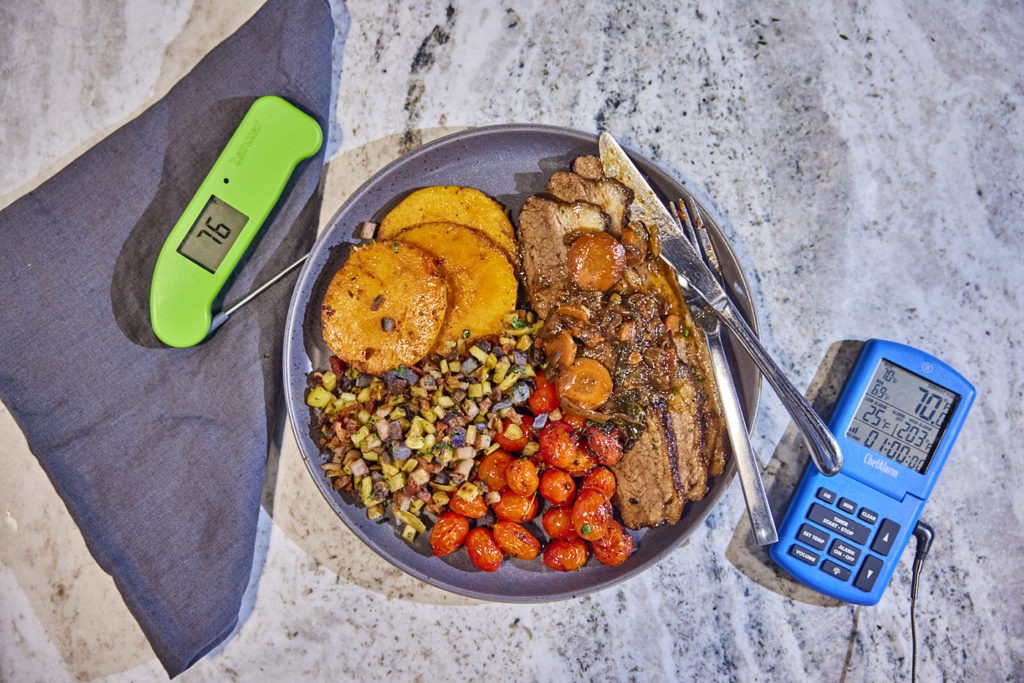
Equipment used in this post:
BBQ vs oven-cooked brisket
There are two main styles of cooking brisket in America. The one that springs first to the mind is smokey and tended carefully by pitmasters who carefully select charcoal and watch fireboxes. The other is more likely to be made by grandmothers who obsess about if you are wearing a sweater and when was the last time you ate? The first, of course, is barbecue and the second is oven brisket, also called braised brisket or Jewish brisket—based on its popularity and prevalence in that community.
Why would anyone make anything besides classic BBQ brisket? Think of it this way: barbecue brisket takes immense patience, learning to roll with the punches, improvisation, and takes upwards of 12 hours to cook. Oven brisket takes more ingredients and an oven, but is usually done in about five hours. And while the flavor of smoked brisket is delicious, Grandma’s oven-braised brisket ends up imbued with flavor that can bring on waves of foodborne nostalgia.
Try this version out. No, braised brisket doesn’t make much sense at a tailgate or a Memorial Day picnic—it’s far too wintery-tasting for that. But rather than trudge out into the snow to stoke your smoker in the winter, you might consider slaking your thirst for luscious, gelatin-packed beef with an oven-cooked brisket during the winter.
How to cook brisket in the oven
What cut of brisket for the oven?
The standard brisket for BBQ is the full packer, and it’s no different for oven-cooked brisket. The only difference is that most of the full-packers used in BBQ are upwards of 10 pounds, a 5–7 lb whole brisket will do just fine in the oven. yes, you can use a giant brisket, just know that you’ll need correspondingly more flavoring ingredients and more time to cook it. If you can only locate a flat it’ll do fine, but a point on there is even better!
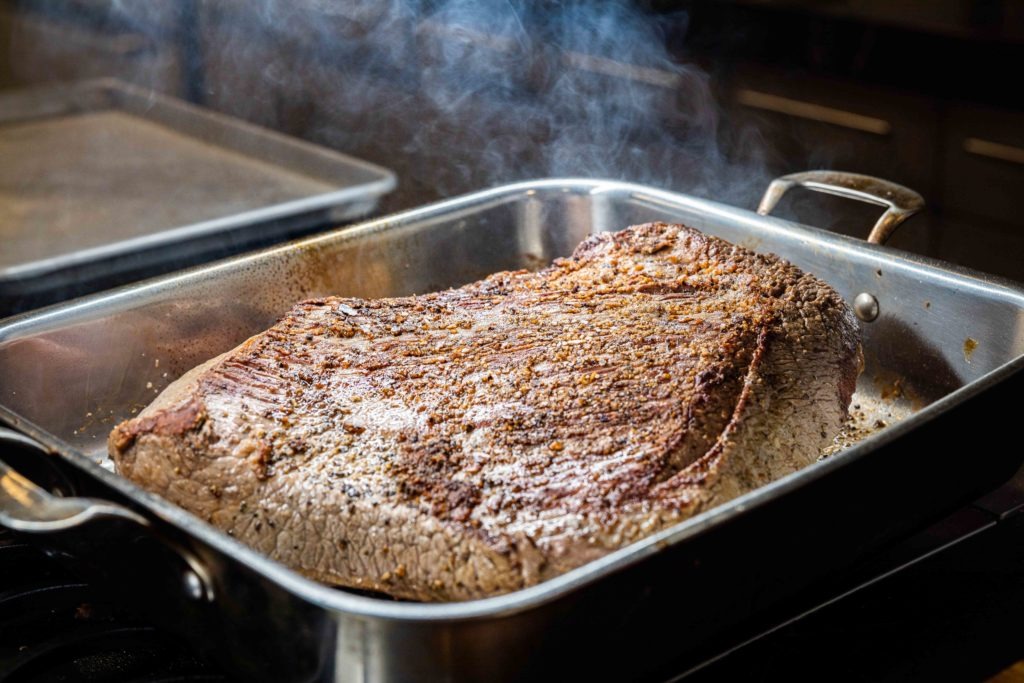
You’ll want to trim your brisket in this case just like in BBQ, getting down to a 1/4-inch or so of fat cap. Brisket in the oven should be cooked fat-side up.
Flavoring Brisket
I bragged above about the flavor-depth in a braised brisket and I wasn’t kidding. But loads of flavor doesn’t have to mean loads of ingredients. Some carrots, celery, lots of onion, maybe some fresh thyme and a few mushrooms provide the flavor, and a splash of red wine gives everything the means to meld together.
Those aromatics provide amazing flavor, but there is another flavor we need: Beef. To increase the beefiness of the dish, you need to brown your brisket before braising it. If you have a large, heavy roasting pan you can brown your brisket right in it on the stovetop. Place it across two burners and heat brown the brisket well on both sides after seasoning it with salt and pepper. If you are using a disposable aluminum pan, brown your brisket under a hot broiler for about six minutes per side, so that it becomes nice and crusty brown. This flavor boost will pay off with big dividends later on.
Oven brisket temps
The chief difficulty faced in cooking brisket is, of course, collagen dissolution. If you don’t melt that collagen down, your brisket will be well-nigh inedible, let alone delicious. And of course, the corollary problem with collagen melt is the evaporative cooling that causes the stall.
By cooking the brisket in the oven, we circumvent all those problems, getting brisket in a (comparatively) short time. We cook the brisket at 300°F (148°C), pushing more heat into the brisket more quickly. In addition, we cook it with water-rich vegetables and wine, creating a liquid element of heat transfer, moving heat into the meat by conduction, not merely radiation. (The brisket itself will also drop water into the pan, creating a gelatin-rich sauce with much more liquid than you started with.) And finally, we cover the brisket through the whole cook. We don’t wait for a stall to get going before we cover our meat, but create the high-humidity environment from the get-go so that there is no evaporative cooling to deal with.
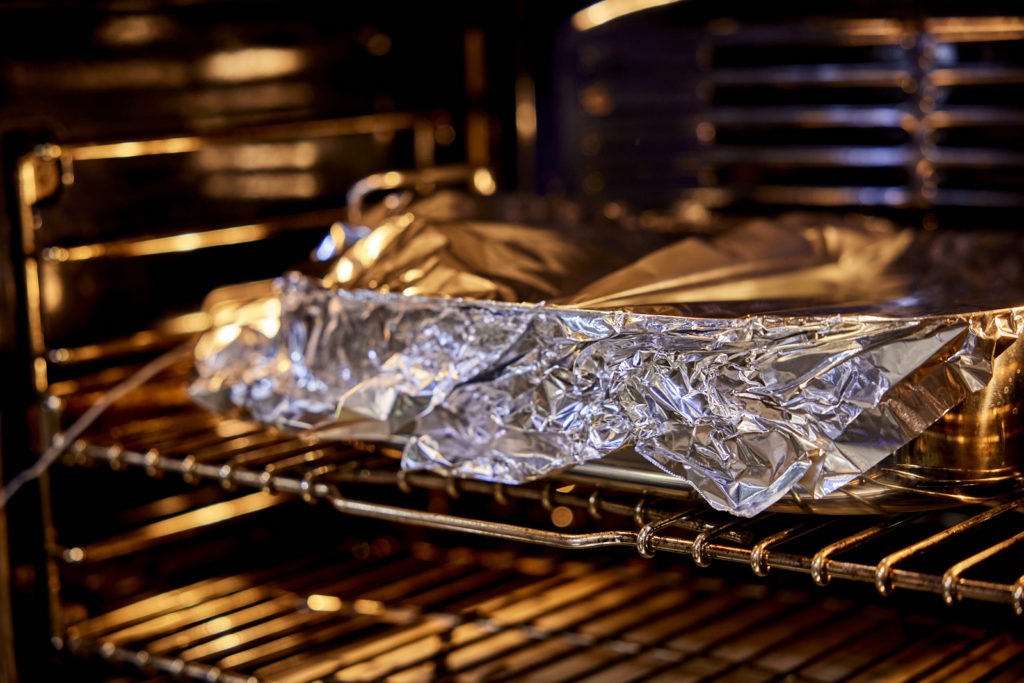
Oven-brisket doneness
With all those thermal advantages, we can get the brisket done in anywhere from 4–6 hours. But time isn’t good enough, is it? We’ll get to the standard brisket pull temp of 203°F (95°C) relatively quickly, so the collagen will still need time to melt. Setting the high-temp alarm on the ChefAlarm® for 203°F (95°C), then, when that temp is reached, setting the built-in timer on the ChefAlarm for 30 minutes is a great solution.
To more fully imbue the brisket with flavor, and to help it store better, the brisket is sliced and then the slices are submerged in the sauce in the pan for a half-hour before serving. And here’s a little piece of holiday magic: it’s even better if you let it sit overnight. Yes, you can make the main course for tomorrow today. In fact, it’s great if made even half a week before serving. Just warm the whole thing up—juices, slices, and all—in a low oven until hot.
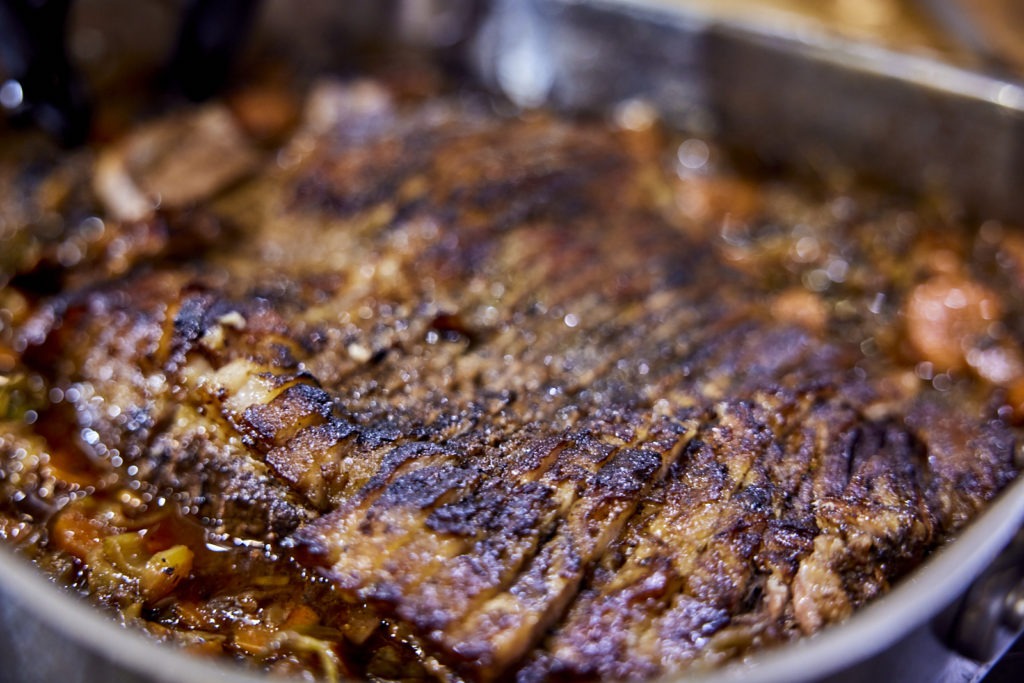
Note: To improve probe longevity, stick the probe through the foil, leaving the probe transition safely out of the steam, which can degrade the probe more quickly over time.
Also, play with these flavors any way you like. It’s a bit of a blank canvas.
I know it’s hard to hear, but this is possibly the most amazing brisket you may ever eat. Yes, it’s different from your standard BBQ fare, but give it a chance. With the ChefAlarm as your guide, you’re bound for a Holiday dinner like no other. All those Grandmas who have been making it this way for generations aren’t wrong! Happy cooking, you’re going to love this.
Print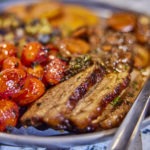
Braised Brisket in the Oven: Deeper, Homier Flavor
Description
Adapted from Jewish-Style Braised Brisket With Onions and Carrots Recipe by Daniel Gritzer at SeriousEats.com
Ingredients
- 1 whole brisket, 5–7 lb
- Kosher salt and freshly ground black pepper
- 2 Tbsp vegetable oil
- 2 lb yellow onions, sliced thin
- 1 leek, light parts only, sliced and cleaned (optional)
- 1 lb carrots cut into coins
- 1/2 lb celery, roughly chopped
- 8 oz mushrooms, cleaned and sliced
- 6 medium cloves garlic
- 1 cup (240ml) dry red wine
- 4 sprigs thyme
- 1 small bunch of parsley
- 2 Tbsp tomato paste
- 2 bay leaves
Instructions
- Preheat the oven to 300°F (148°C).
- Coat the brisket liberally with salt and pepper.
- Heat the roasting pan with a little oil in it over medium-high heat. Cook the brisket on both sides until nicely browned.
- Remove the brisket from the pan and set aside.
- With the pan still over the heat, add the vegetables and herbs and cook until they become translucent, scraping up the beefy bits form the bottom of the pan.
- Add the tomato paste and continue to cook for another 2–3 minutes.
- Pour in the wine to deglaze the pan.
- Nestle the brisket into the sauteed veggies, insert a Pro-Series needle probe into the brisket. Cover the pan tightly with foil.
- Set the high-temp alarm on your ChefAlarm for 203°F (95°C) and cook the brisket in the oven.
- When the temperature alarm sounds, verify the temp with a Thermapen® by pulling the foil back and probing it.
- Re-cover the brisket pan and set the timer on the ChefAlarm for 30 minutes. Continue to cook the brisket.
- When the timer sounds, remove the pan from the oven and the brisket from the pan.
- Allow the brisket to cool slightly, then slice it and submerge the slices into the now-plentiful pan sauce.
- Allow the slices to soak for a half-hour (or up to four days in the refrigerator) and serve with accompaniments, spooning the sauce over the brisket.


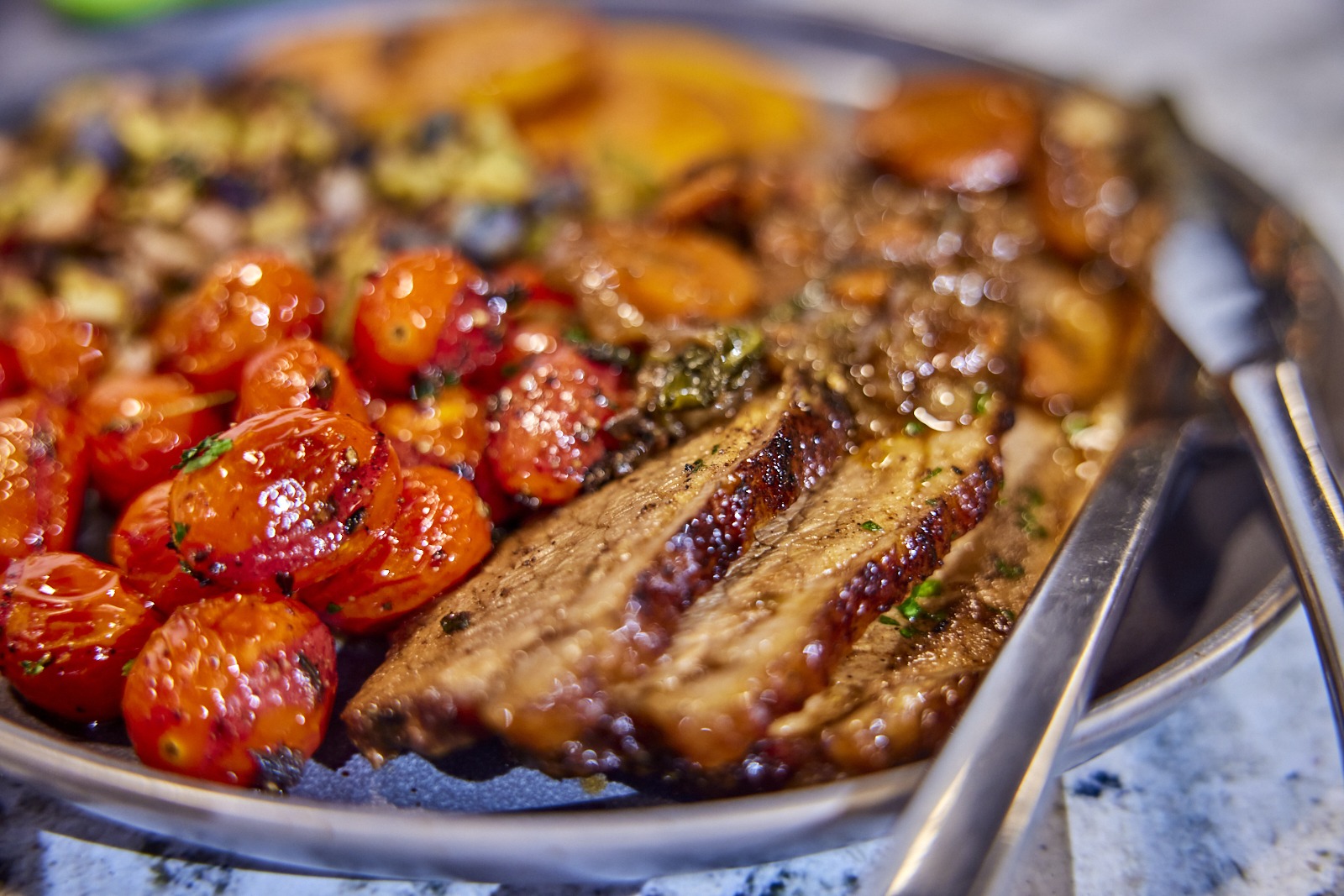
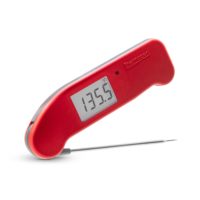
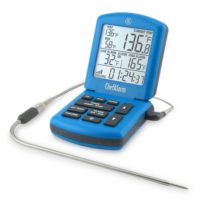
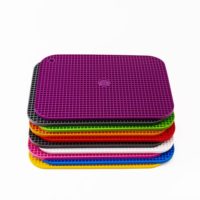
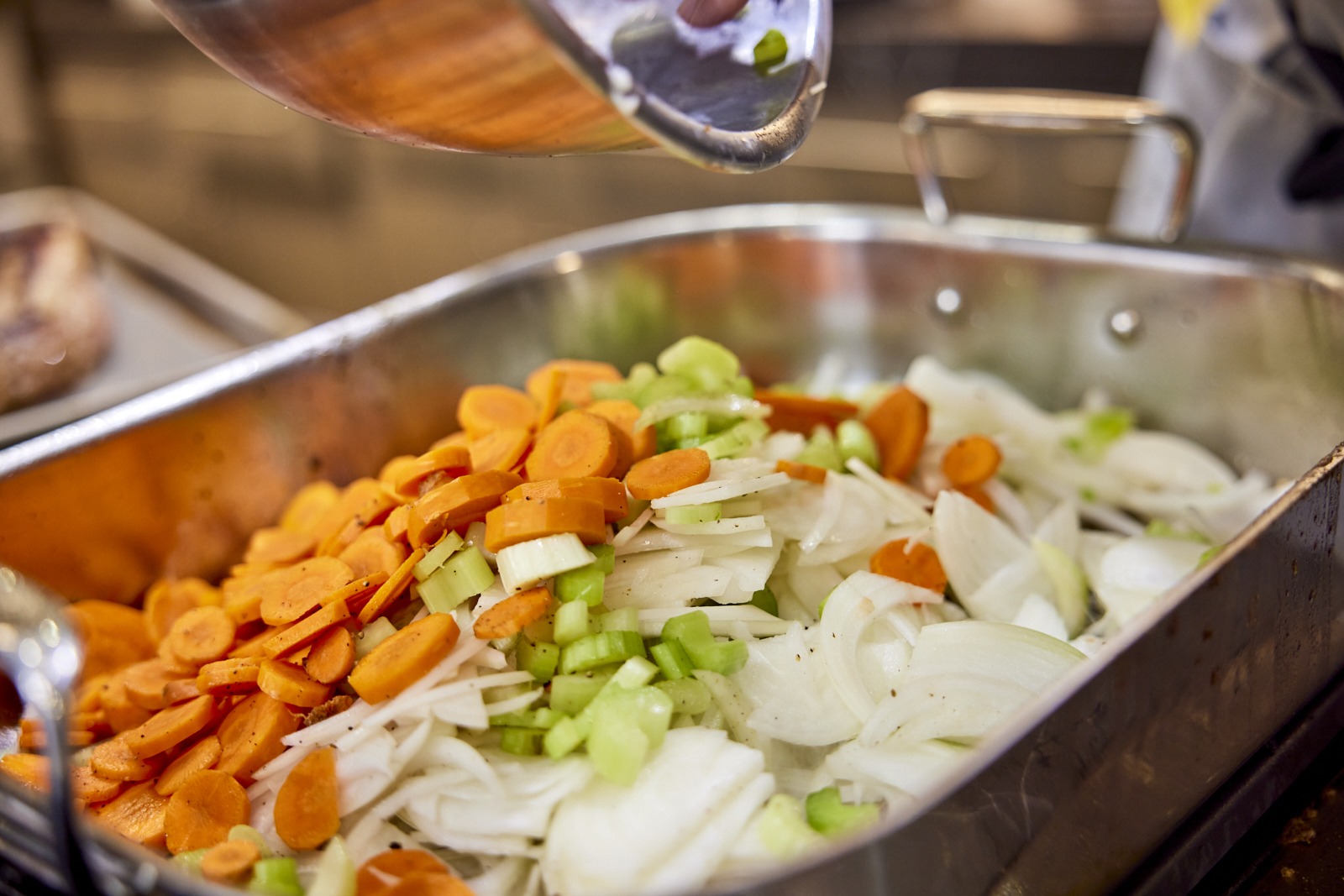
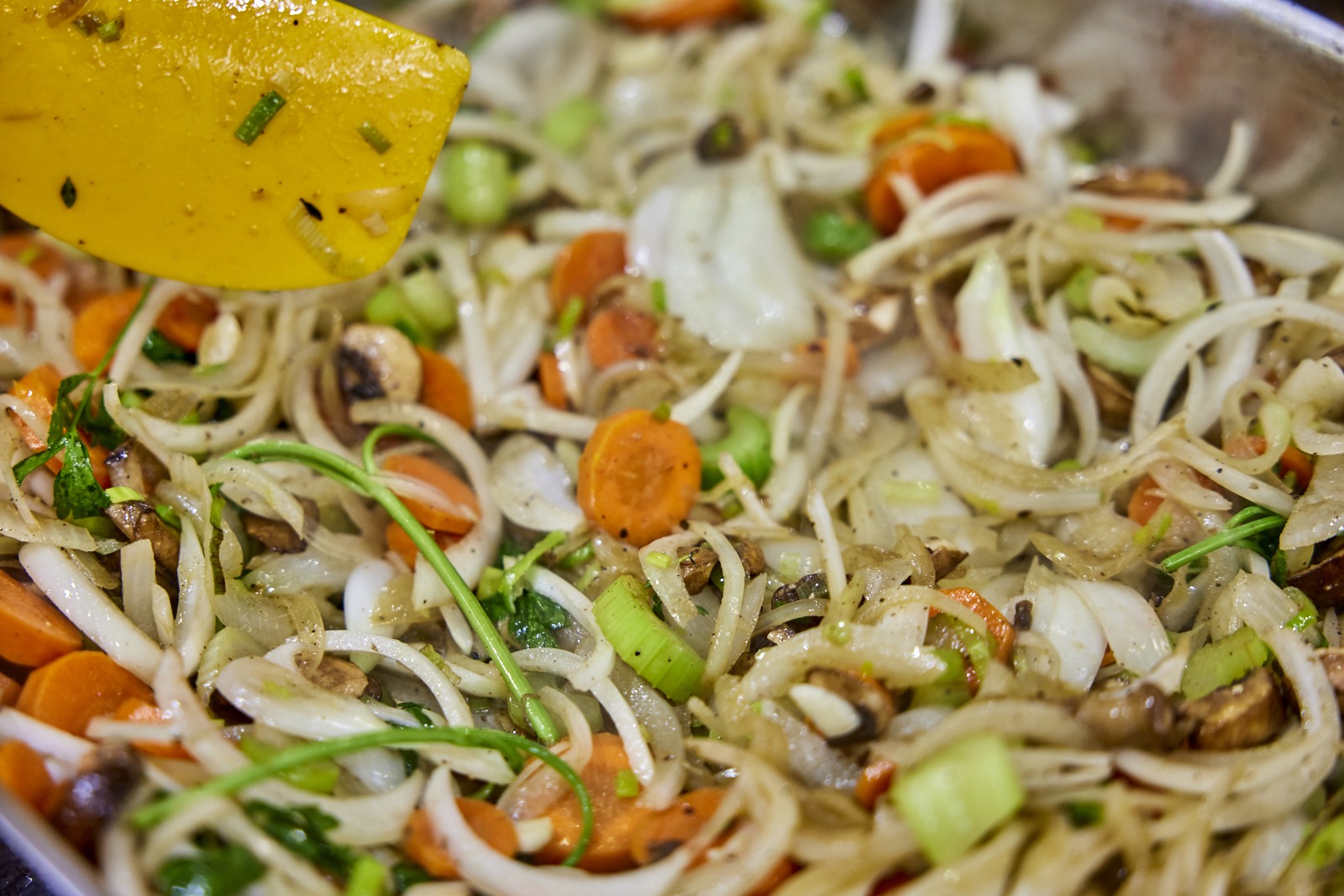
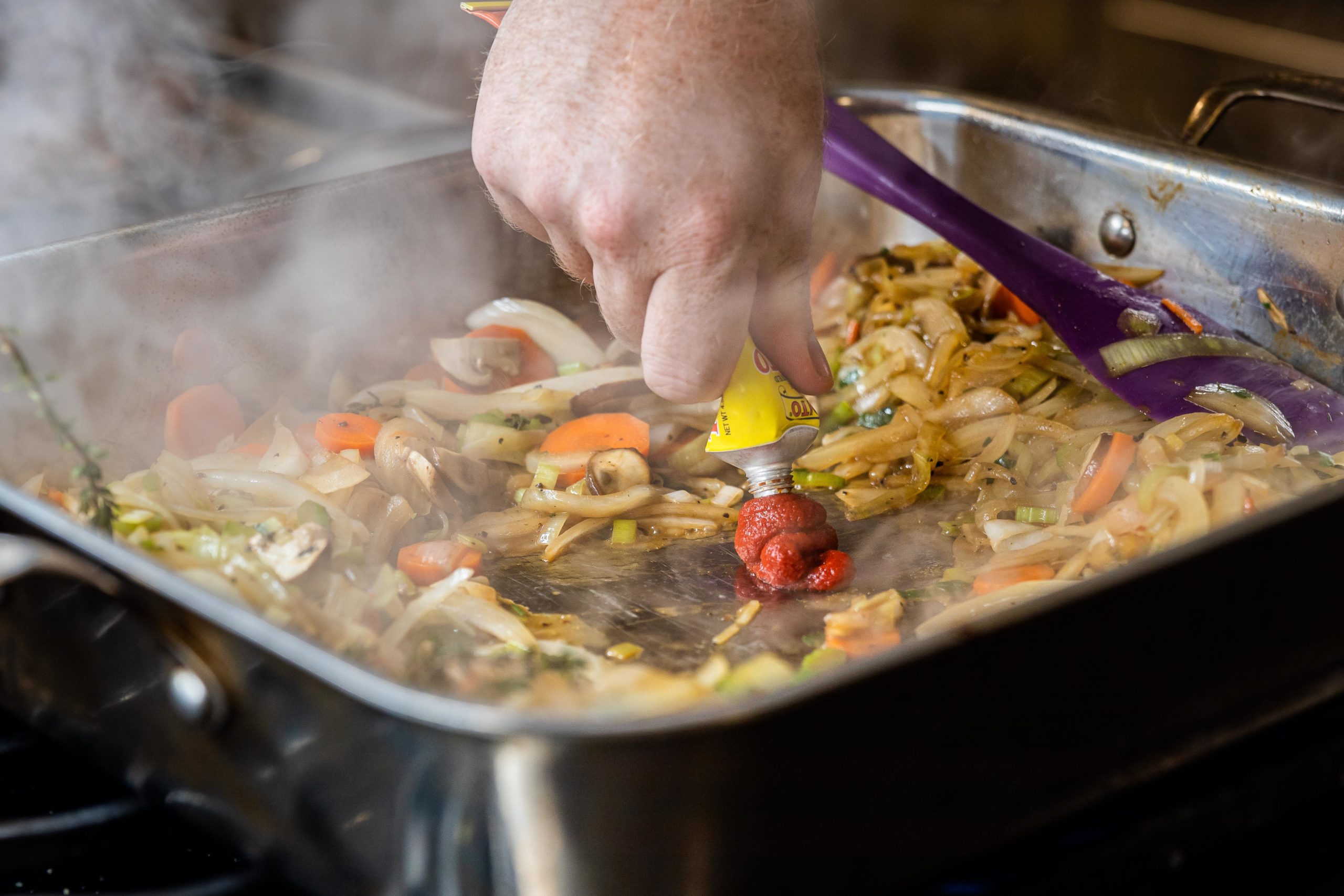
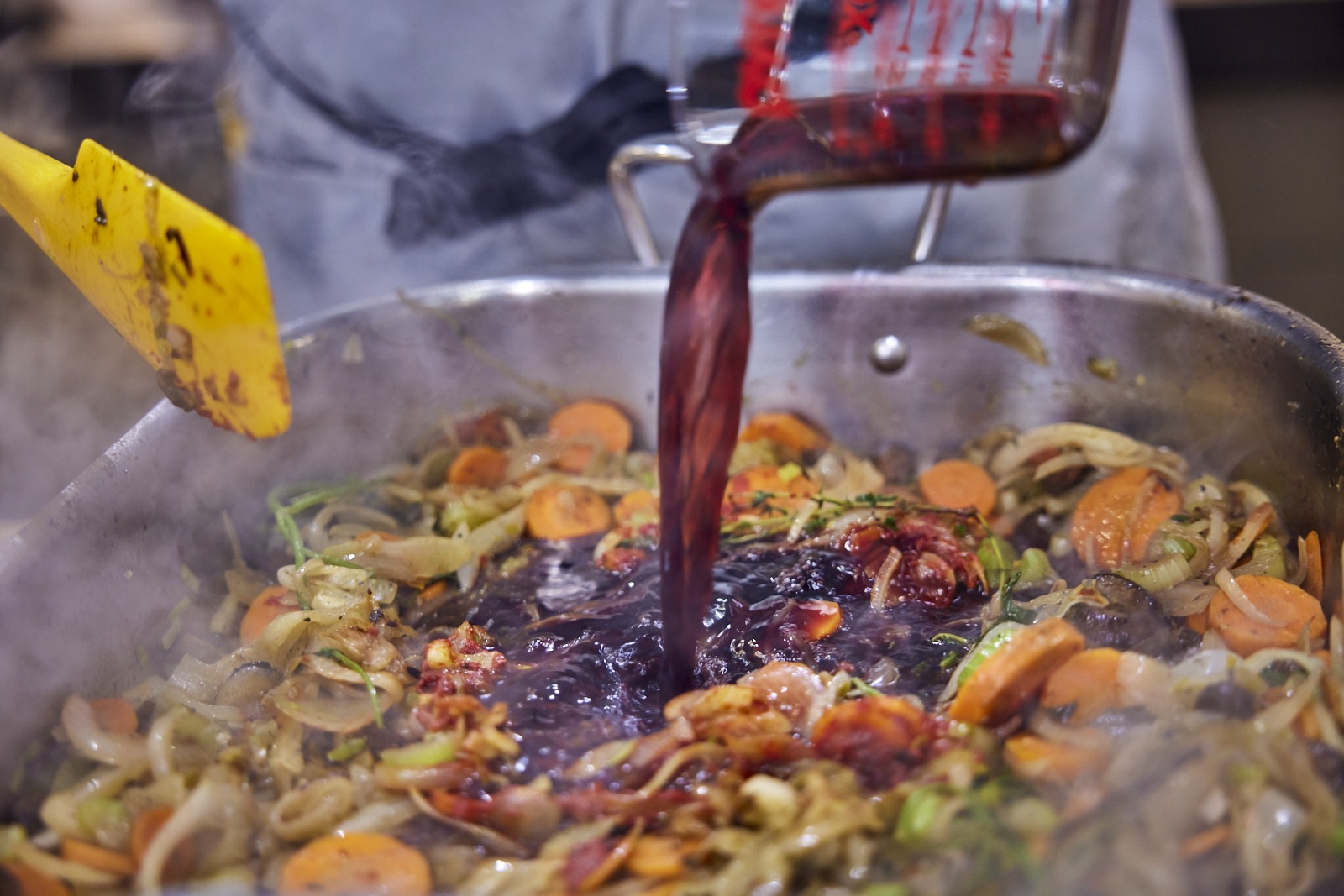
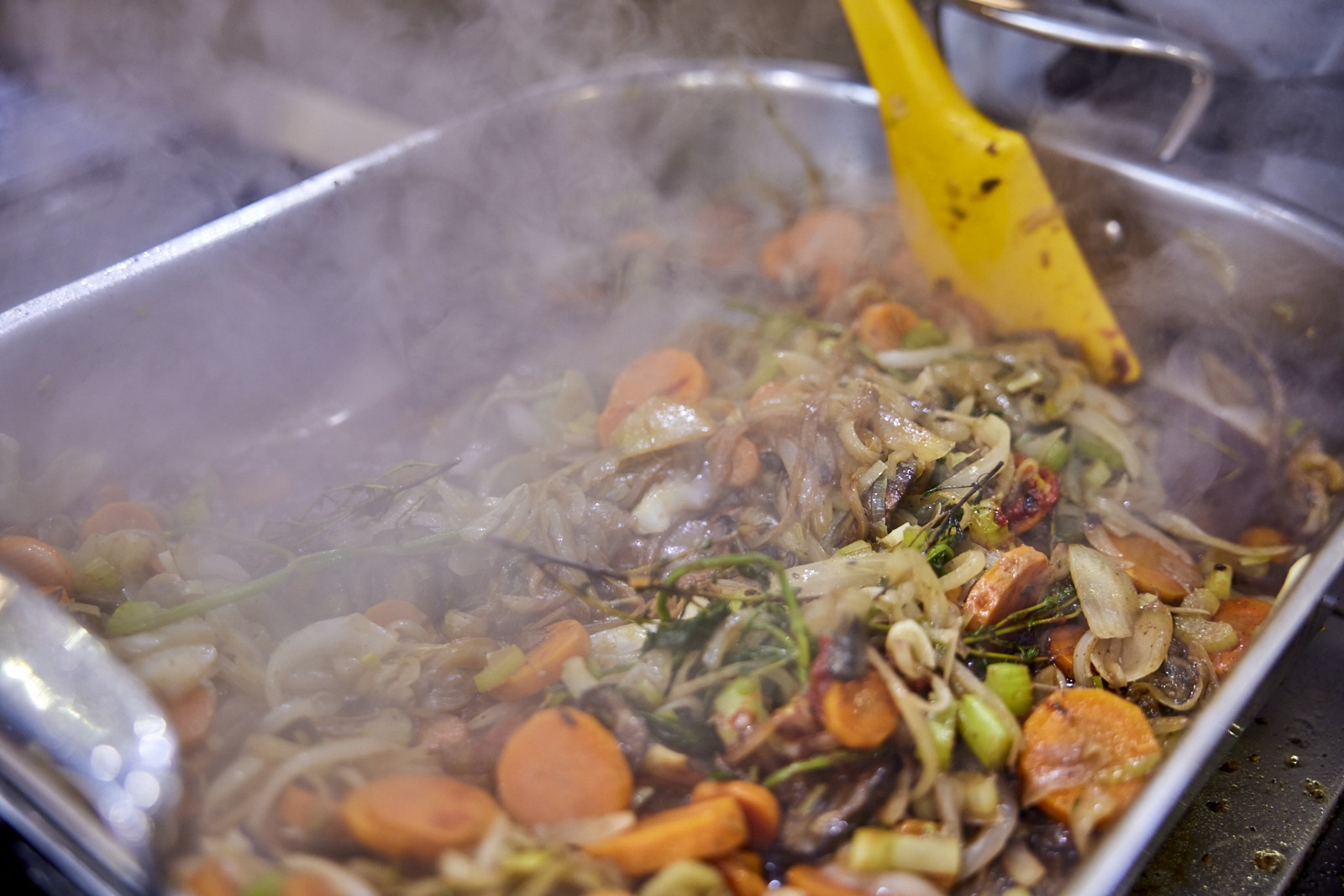
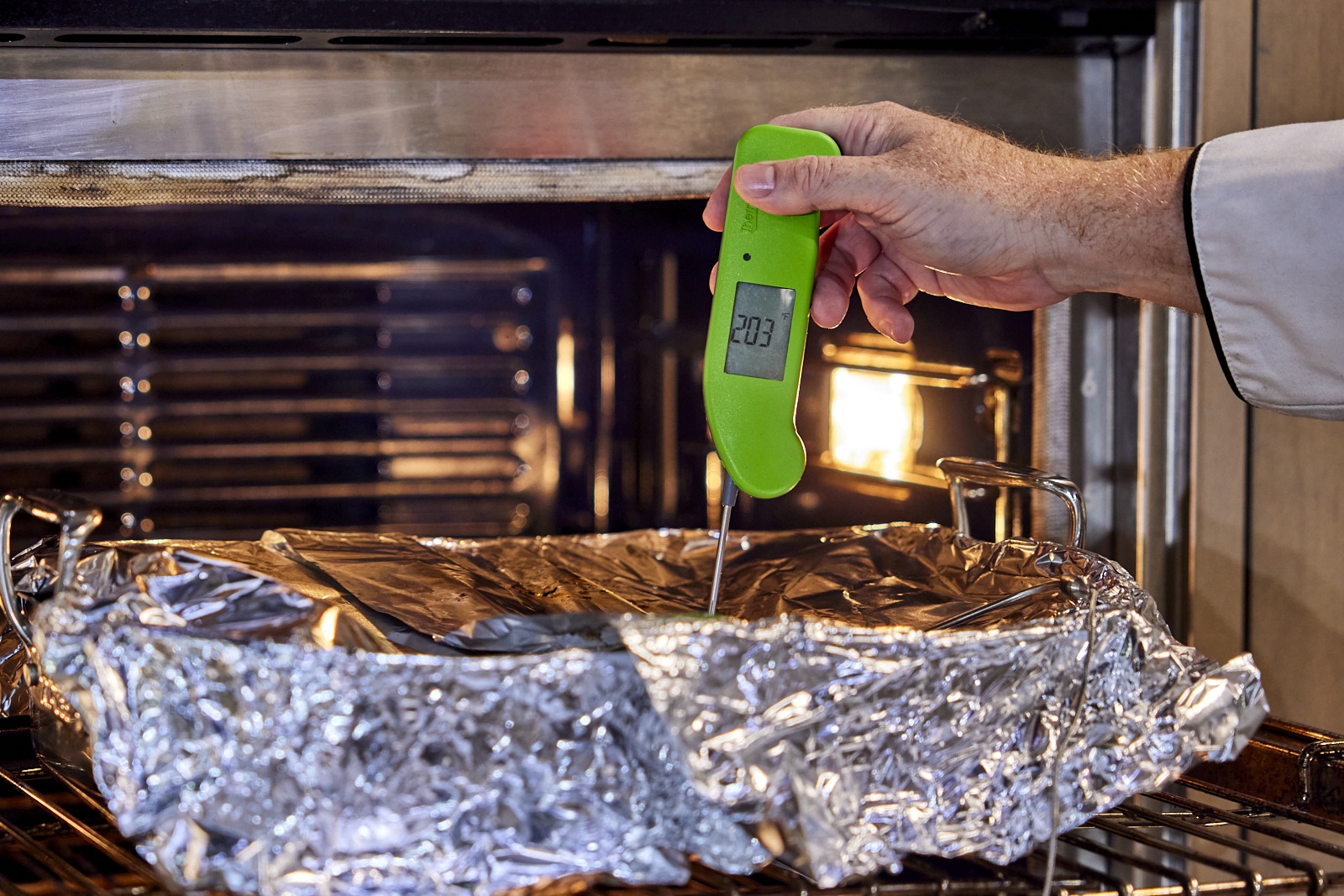
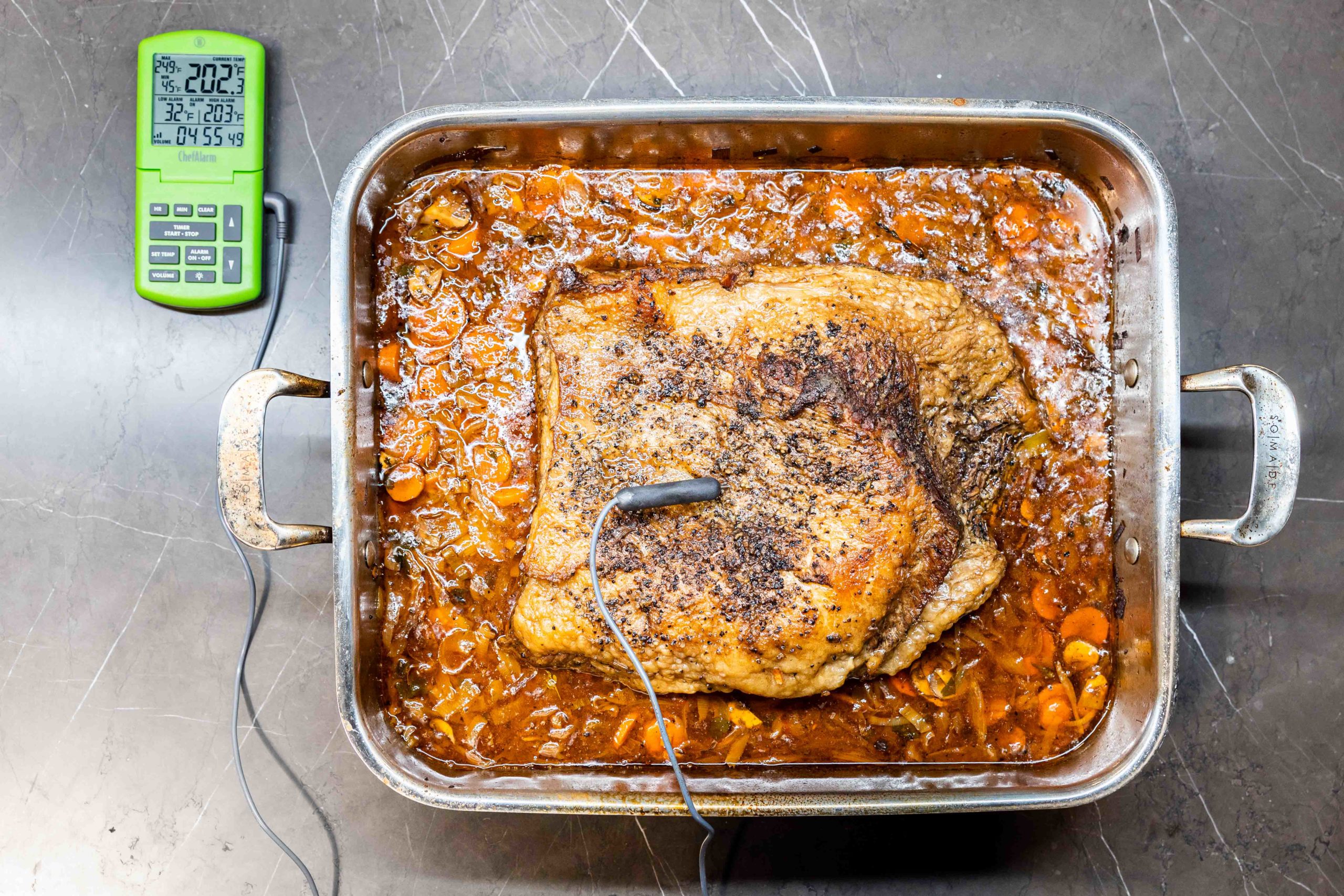
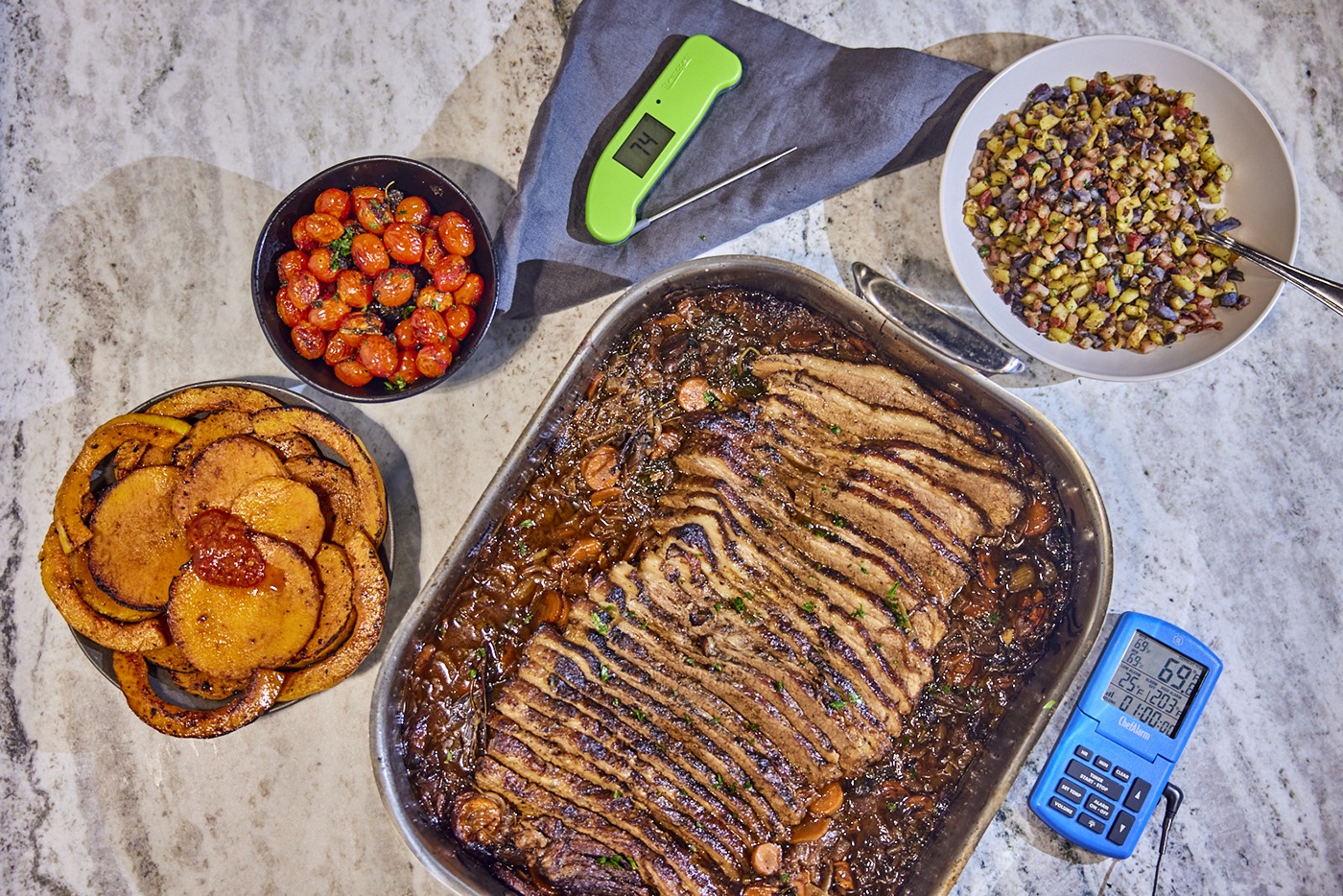
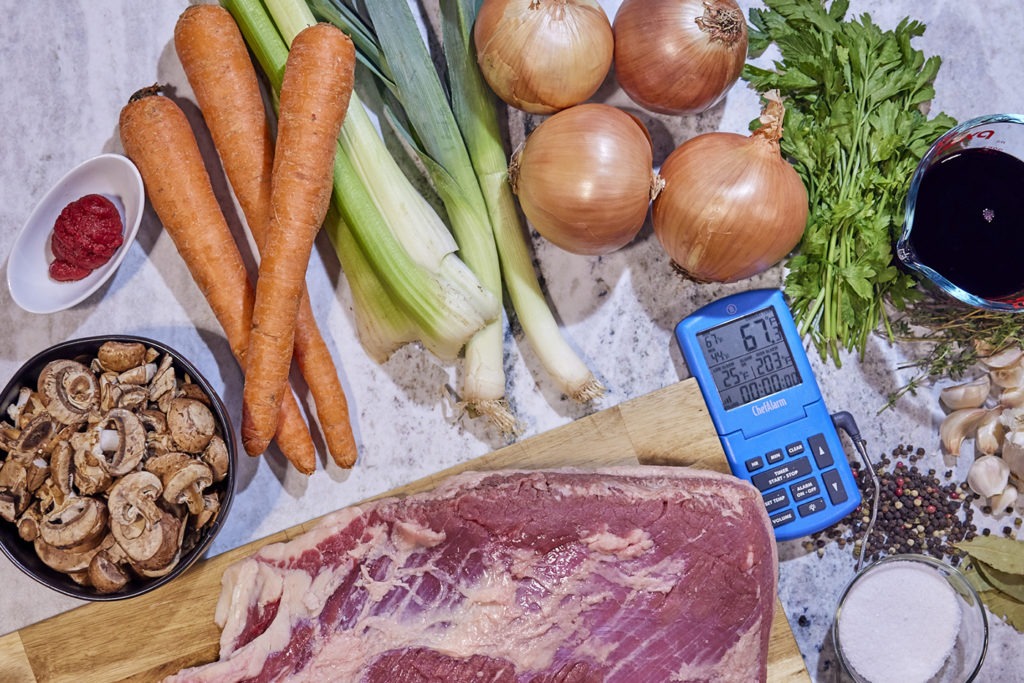
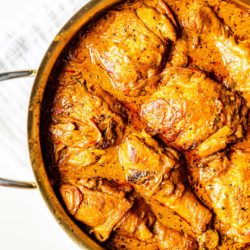
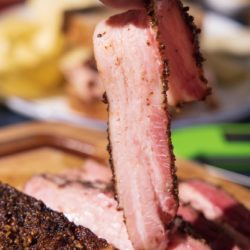
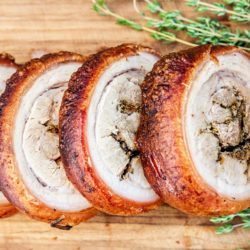
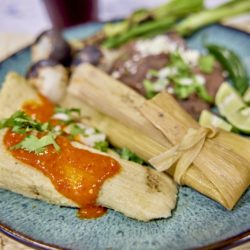

So what you made a pot roast
No this is much more complex than a pot roast , try it before denigrating a wonderful recipe . If you are purist try authentic barbacoa .
Dan’s recipe is really good. What do you feel you achieved with your modifications? Thanks!
Art,
By subbing out the ketchup and canned tomatoes and using tomato paste I toned down the sweetness just a little bit. I have ZERO complaints with his recipe, honestly. It’s FANTASTIC.
Thanks! Before putting in the time, I really wanted to know the difference (having made Dan’s recipe). I understand the subtle change in the profile. Jewish holiday food does tend toward representing the “sweetness of the holiday, which isn’t always wanted for other days. Best wishes, Art
This looks so good. I really like BBQ’d brisket, but this takes me home! The idea of making this ahead is appealing, as well as stress reducing.
When you say to reheat slowly, just what is that?
I’m thinking I can cook other dishes in the same oven as the reheating brisket, but wonder if 350 degrees is too hot. If I hadn’t other things to cook I’d probably reheat at 225 degrees until serving temp of 165 degrees, or so.
Rick,
You’ve hit the nail on the head. 350°F is too hot. 225°F would be fine. I’d go as high as 300°F. Warm it covered in foil to keep it from drying or forming a weird skin on the surface of the sauce. You can de-fat the sauce after refrigerating, too, if you like.
Tell me why one could not do this recipe in a slow cooker of sufficient size? Except for the browning of the brisket, it seems that a slow cooker is a perfect closed vessel with mild heat perfect for braising.
Walter,
Good question. For one, thing, size. I know there are large slow cookers, but most small round ones won’t fit a brisket. In general, you could use one, yes. Part of the appeal of this dish is the sliceability, something you don’t get if you cook it for too long. You’d still want to temp it so that you don’t dissolve all texture.
I intend to try the slow cooker route, if I can find a brisket that will fit, that is. I’ll let you know how it turns out and the reactions of our guests, if and when I serve it.
Please do!
When you say that after the brisket reaches 203, recover and set the alarm for 30 minutes and return to oven, what does that mean at the end of the 30 minutes? Is the temp greater than 203 degrees, do you turn the oven off during the 30 minutes, what am I missing?
Dennis,
You cover it again and put it back in the oven, still turned on, for 30 minutes. The temperature may go up some, but not significantly. That extra time at temp will allow more collagen to melt, making your brisket tastier and more supple.
Can you please post reheating a instructions ? I want to make this a day ahead so I can bake other items the day of.
Thank you!
The best way to reheat it is in a 325°F oven. Leave the brisket in the dish with the liquid and cover it. You only need to get it up to food-hot, not all the way back up to 203°F, so it will go faster.
Can the probe coil handle the oven door being closed on it? It isn’t a problem on my smoker because the door isn’t as tight & there aren’t the twists & turns.
Yes, the probe cord is meant to be shut in oven doors.
Where do you find a Whole Brisket at 5 to 7 lbs? I have never seen them Whole Briskets under 10 to 20 lbs. I’ve seen flats or points that size.
Small briskets do exist…they just ren’t as popular right now as they used to be, so they’re harder to find. A flat will do well, in all honesty.
Here’s a classic Jewish recipe for braised Brisket. I use the flat for my braised brisket, saving the point for the BBQ as the heavy far in the point can make the gravy greasy. I’ll either smoke the point or cut it and grind it for really good hamburgers.
Jerry’s Famous Brisket
(My mother’s recipe with my own little touch)
1 Whole Flat Brisket of beef (about 7-8 lbs) with a thin layer of fat left on top.
2 – 3 medium yellow onions, pealed and sliced into 1/8 -1/4 inch slices
1 bottle good beer or ale
2 – 15 oz canned stewed tomatoes (or better yet stew your own)
A layer of garlic powder on the brisket
Black & white pepper to taste
A layer of paprika (real Hungarian Paprika is best)
Note: For best results make the day before and let sit in the refrigerator!
• Have the butcher remove most of the fat including the fat between the layers on the point, leaving a very thin layer on the top.
• Turn the oven on to at least 500 degrees to preheat.
• Slice one onion and put the slices on the bottom of a covered roaster. Add one can of the stewed tomatoes. Place the brisket on top of the tomatoes and onions, season with a lot of garlic powder and paprika, and some black and white pepper. You can add some salt if you don’t have high blood pressure.
• Place the roaster with the meat, onion and stewed tomatoes in the oven for about 15 minutes.
• Remove the roaster and turn the oven down to 350 degrees. Place a layer of sliced onions on the meat; add one can of stewed tomatoes and a half bottle or can of beer.(Omit the beer during Passover) Drink the rest of the beer (unless you have a drinking problem). Cover tightly and cook at 350 degrees for about 30 minutes a pound or until just tender when pierced with a fork.
• Remove from the oven and place the meat on a cutting board. Pour the gravy into a tall container (you may want to separate the onion and tomatoes), cover the gravy and chill separate from the meat.
• Let the meat cool for 1 to 2 hours and then slice against the grain. Keep noshing to a minimum. Trim off any excess fat at this time. Place in refrigerator.
• About one to two hours before serving, remove the meat from the refrigerator, skim the solid fat from the gravy and add to the sliced meat up to about half way up. Add the onions and tomatoes. You can add quartered potatoes. Cover and reheat for about 1 to 1 ½ hours at 350 degrees. Transfer to serving plate and enjoy. You may want to serve the gravy, either plain or thickened, on the side.
Leftovers can be kept 3-4 days in the refrigerator. It freezes well.
Oh man…thank you for sharing! I can’t wait to try this.
Granted it’s an “Oven Brisket”, yet couldn’t the smokiness be created by adding Liquid Smoke mixed into the wine, +plus the salt & pepper, rub with Smoked Paparika…???
Sure! SMoked paprika, in particular, sounds good to me.
Greetings Martin –
I will be preparing 2 small approximately 4 1/4 pound flat cut briskets in a few days and would appreciate your input. Though I prefer the point, that won’t happen this time.
The amazing and memorable Paley’s Place Double-Chile Brisket is the recipe I’ll be using. My son prepared it a number of years ago and I’ve been dreaming of it since then. For the most even braising and heat control, do you recommend cooking the briskets separately, or in one large roasting pan covered with aluminum foil?
For temperature monitoring I do have one adored original Dot and a new Square Dot, and will be rechecking with the Thermapen One. Though I do not often use the convection function, I could if you recommend it, in which case the temperature should probably be 270 or 275.
What do you think? Many thanks, Nora
Nora,
So sorry I’m answering this late! If you can fit the briskets side-by-side, one big pan is great, otherwise, two is better. I would just use the non-convection setting, no need to mess with it if you’re used to it the other way!
Would there be any problem with adding two cans of new potatoes to the roaster nestled around the vegetables? I wanted to try your recipe but I am concerned about there not being enough liquid if I add the potatoes. I have never made a braised brisket with such little liquid before? It looks amazing though!
That should be just fine! They won’t absorb much juice, as they are already pretty saturated.
Hi Martin. I finally got around to trying the recipe this weekend. It turned out great with lots of flavor and more liquid in the pan than expected. We served it with baked potatoes and they were a great place for some of the extra vegetables and pan liquid. The biggest problem that I had was finding a smaller brisket that would fit in our oven roasting pan. Most that I found were way too large and in the 10+lb range. I bought the smallest that I could find and cut it to size. There is always a use for an extra piece of brisket.